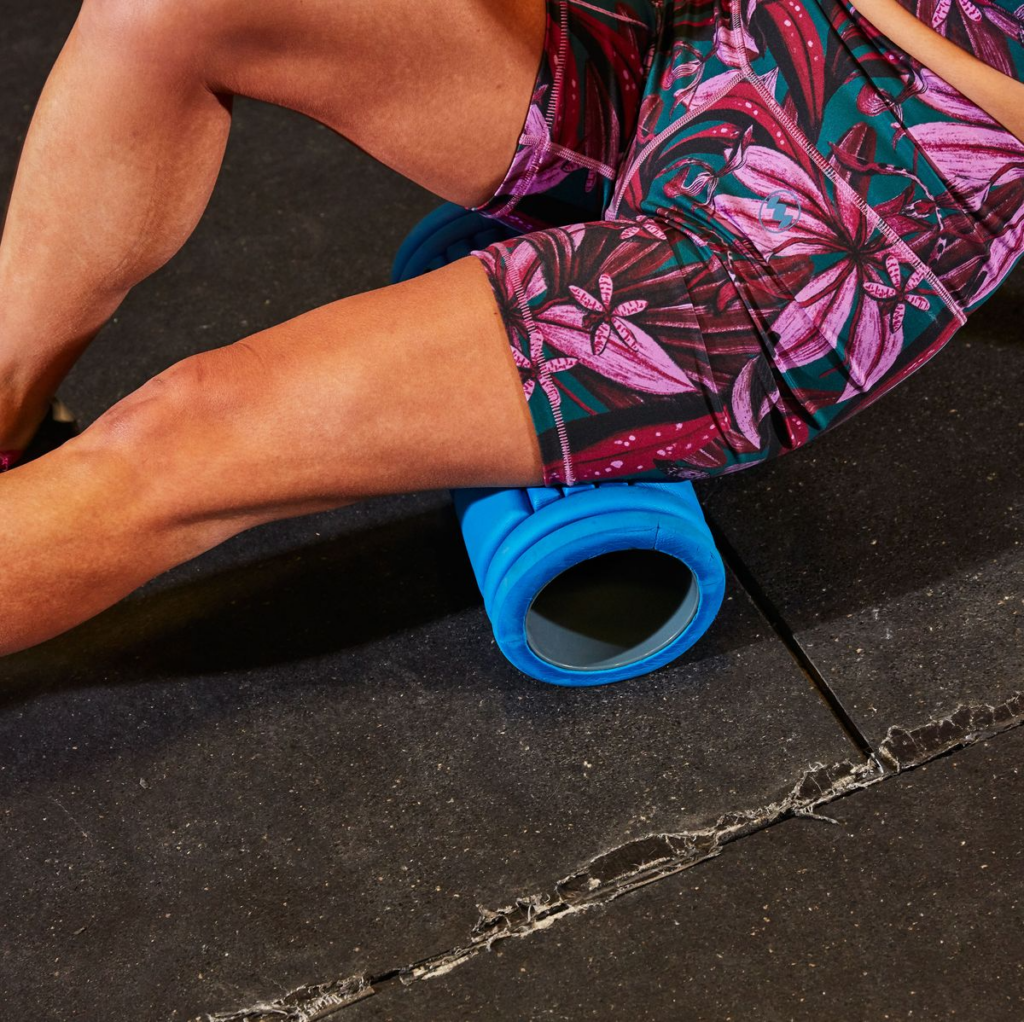Should you foam roll then stretch or vice versa? Turns out, the order does make a difference for your range of motion.

- Foam rolling followed by stretching before a run can improve your range of motion, which can, in turn, improve your running performance, according to new research.
- This is because your muscles’ relaxation response to foam rolling makes stretching more effective.
- Doing this sequence before exercise rather than after can be helpful for performance, in part because your muscles get truly “warmed up” and prepped for a run.
Foam rolling and stretching is often touted for helping increase your range of motion, which can boost running performance. But does it really matter which you should do first before running as long as you get the benefits of each? Recent research in the Journal of Sports Science & Medicine suggests there really is an ideal one-two combination.
In a meta-analysis, researchers looked at 12 studies that involved foam rolling and stretching, particularly those including performance parameters like greater strength or better jump height.
In assessing the effects of each strategy on its own, as well as combining the approaches, the researchers found that putting foam rolling and stretching together had the greatest increase in range of motion, especially when done in that order.
That’s not surprising to physical therapists who use exactly that sequence, and do them before activity instead of afterward, in order to increase flexibility and mobility.
“Foam rolling—or any other kind of massage—can help to loosen up tight areas, but there’s a lot of misconceptions about how this happens,” Carol Mack, D.P.T., C.S.C.S., physical therapist and owner of CLE Sports PT & Performance, told Runner’s World. “The thought that scar tissue or adhesions in the muscle are ‘broken up’ by the roller is false. What actually happens is that the deep pressure from the roller triggers a reflex in the muscle that causes it to relax.”
That relaxation response makes stretching more effective, which is why foam rolling first is more beneficial than the other way around.
However, Mack added, to be effective, the foam rolling needs to be done properly. Often, she sees people rolling too quickly, and that doesn’t provide enough pressure on a tight spot for the muscle to relax.
“It should feel intense but tolerable,” she said. “Don’t move until you feel the tight area start to relax. Then move on to another sore spot.”
Once soft-tissue work is done through foam rolling or massage, it should be followed up with some type of active movement in order to use the muscle that was just worked, she added. That usually means dynamic stretching, in which you’re doing slow activity to make the most out of that improved range of motion. (Some examples of dynamic warmup stretches include lateral leg swings, side lunges, and modified single-leg deadlifts.)
Doing this sequence before exercise rather than after can be helpful for performance, in part because your muscles get truly “warmed up” and prepped for a run, said Diana Garrett, D.P.T., C.S.C.S., physical therapist and outpatient rehabilitation supervisor at Providence Saint John’s Health Center’s Performance Therapy in Santa Monica, California.
“We’ve found foam rolling is more effective as a warmup rather than a recovery tool,” she told Runner’s World. “Similar to dynamic stretching, it can be used to help improve range of motion and flexibility, and provide a cue for the body that prepares it for more high-intensity activity.”